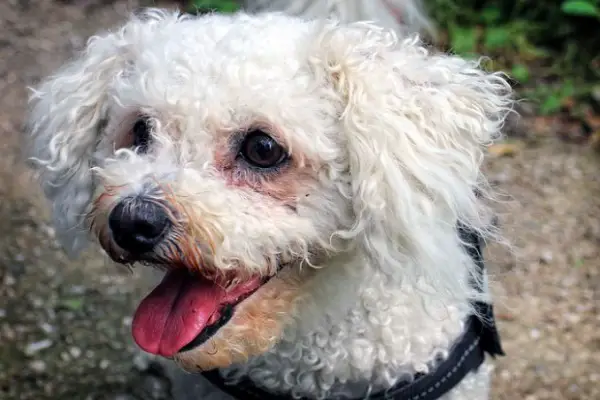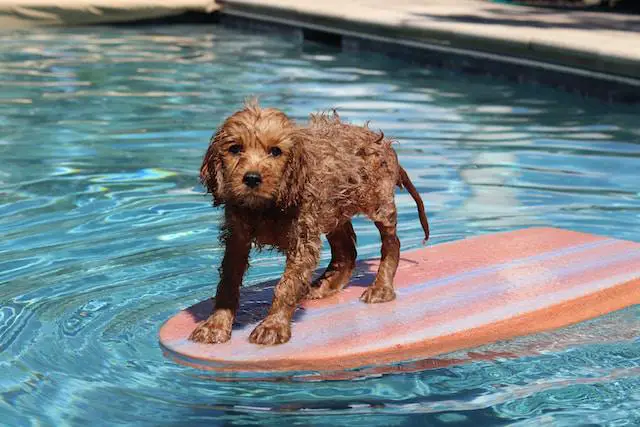Great Pyrenees Separation Anxiety [Explained]
![Great Pyrenees Separation Anxiety [Explained] Great Pyrenees Separation Anxiety](https://petcreeks.com/wp-content/uploads/2023/04/Great-Pyrenees-Separation-Anxiety.jpg)
If you’re a Great Pyrenees owner, it’s important to understand the signs and symptoms of Great Pyrenees separation anxiety.
As well as the steps you can take to help your furry friend feel more secure and comfortable when you’re not around.
In this post, we’ll explore separation anxiety in Great Pyrenees and give you some tips on how to handle it.
Great Pyrenees Separation Anxiety
Great Pyrenees Separation Anxiety is a condition in which a Great Pyrenees dog experiences anxiety or panic when separated from its owner or family members.
These dogs are known for being loyal and affectionate to their owners, so separation from their owners can cause a great deal of stress.
Causes of Great Pyrenees Separation Anxiety
Here are some possible factors that could contribute to separation anxiety in Great Pyrenees:
- Lack of Socialization: Poor socialization can lead to fear and anxiety in Great Pyrenees dogs, which can make them more prone to separation anxiety.
- Traumatic Events: Past traumatic experiences, such as abuse or abandonment, can cause anxiety and make it difficult for Great Pyrenees dogs to adapt to new situations.
- Changes in Routine: Sudden changes in the dog’s routine can be stressful for some Great Pyrenees dogs and may trigger separation anxiety.
- Lack of Exercise: Great Pyrenees are a breed that requires a lot of physical and mental exercise. A lack of regular exercise can lead to stress and separation anxiety in Great Pyrenees dogs.
- Environmental Factors: Loud noises, other dogs barking or being aggressive, or being in a busy or crowded area can cause stress which might lead to anxiety.
- Owner Behaviors: Sometimes, an over-dependence on people or prolonged cuddling times before leaving can exacerbate separation anxiety issues as much as not giving your dog enough attention.
- Medical conditions or physical discomfort: Health issues or physical discomfort may worsen separation anxiety in Great Pyrenees dogs.
- Time alone: Boredom or loneliness due to long hours alone can contribute to severe separation anxiety in Great Pyrenees dogs.
Learn more about the cause of separation anxiety in dogs.
Symptoms of Great Pyrenees Separation Anxiety
The following are some common symptoms of Great Pyrenees separation anxiety:
1. Showing excessive energy when you return
When reunited with their owner after being left alone, Great Pyrenees may become too energetic, which may be the consequence of their anxiousness and stored energy.
Regular exercises and mental stimulation, such as interactive games or puzzle toys, might help them feel less anxious and contain their extra energy when they are reunited.
2. Clingy behavior
When left alone, Great Pyrenees may exhibit excessive levels of clinginess, such as following their owner around the home or showing anxiety when they are gone.
Their separation anxiety is evident in this behavior, which can also result in other negative behaviors.
While they’re together, giving them plenty of love and attention while also assisting them in learning independence and confidence via training will help lessen clinging behavior.
3. Constantly trying to escape when you leave
When left alone, Great Pyrenees may attempt to flee the home or yard, which can be risky if they get lost or hurt.
They use this activity to either search for their owner or to get away from their worry.
In order to avoid escape attempts, it’s crucial to give them a secure habitat while left alone, such as a strong fence or a lockable box.
4. Obsessive behavior
When left alone, Great Pyrenees may exhibit compulsive behaviors such as repeatedly licking their faces, pawing at doors or windows, or fixating on a specific item.
They use this habit, which can result in self-harm or other issues, as a coping mechanism for their worry.
Giving them suitable chew toys or brainteasers can help them change their attention and stop compulsive behavior.
5. Excessive drooling when left alone
When left alone, Great Pyrenees may drool excessively, which may leave wet stains on carpets or furniture.
It’s critical to address the root of their suffering rather than simply the symptom when dealing with this behavior, which is a coping method for their worry.
They can feel less anxious and stop drooling if you provide them with a cozy and familiar setting, such as a box or a designated safe area.
6. Urinating or defecating indoors
Even though they are usually trained to use the bathroom in the home alone, Great Pyrenees occasionally have accidents there.
Instead of penalizing them for the accidents, it’s crucial to treat the underlying source of their anxiety and tension because this conduct is a result of it.
You may lessen their anxiousness and minimize accidents by giving them many bathroom breaks before leaving and taking them on lengthy walks.
7. Refusal to eat or drink
Even if they are normally good feeders, Great Pyrenees may refuse to eat or drink if left alone.
If not handled, this is a symptom of their suffering and may result in dehydration or malnutrition.
You may encourage them to eat and drink while they’re by giving them their favorite treats or food puzzles and lots of fresh water.
8. Pacing or restlessness
When left alone, Great Pyrenees may pace back and forth or show signs of agitation.
They use this activity to either look for their owner or to let off some worried energy.
Exercise and mental challenges, like puzzle toys or interactive games, might help children feel less anxious and remain calm when left alone.
9. Increased destructive behavior
When left alone for a prolonged amount of time, Great Pyrenees can become destructive.
This might involve digging holes in the ground, gnawing on things, or scuffing on walls or doors.
It’s crucial to understand that they are not acting this way out of spite, but rather as a means to let out their stress and pent-up energy.
Their energy may be redirected, and destructive activity avoided by providing them with suitable chew toys, a dedicated digging area, or a safe, contained setting.
Learn more about the Great Pyrenees behavior problems.
10. Excessive barking or howling
The protective character of the Great Pyrenees is well-known, and they may bark or howl if they feel threatened or uneasy.
They may growl or howl excessively when left alone to express their concern and try to attract their owner’s attention.
Neighbors may have issues with this, therefore it’s critical to address it using positive reinforcement training, desensitization methods, or other tactics.
Learn more about the signs of separation anxiety in dogs.
How To Manage Separation Anxiety in Great Pyrenees Dogs
Here are some ways to manage separation anxiety in Great Pyrenees dogs:
- Gradual Separation – Start with short periods of separation and gradually increase the time your Great Pyrenees dog spends alone.
- Exercise – Provide plenty of exercise before leaving your dog alone. A tired Great Pyrenees dog is less likely to become anxious.
- Crate Training – Give your dog a safe, comfortable space to be in while you’re away. Start crate training by having your dog spend short periods of time in the crate while you’re home and gradually increase the time spent in the crate.
- Provide a Calming Environment – Provide toys, chews, and other items that can keep your dog calm while you’re away. Some Great Pyrenees dogs may benefit from calming pheromone sprays or diffusers.
- Calming Music – Play calming music or white noise to help create a calming environment.
- Puzzle Toys – Provide puzzle toys or treat-dispensing toys to keep your Great Pyrenees dog mentally stimulated while you’re away.
- Desensitization – Gradually desensitize your Great Pyrenees dog to the cues that you’re leaving, such as picking up keys or putting on a coat.
- Separation Anxiety Training – Work with a professional dog trainer or behaviorist to address separation anxiety.
- Medication – In severe cases, medication prescribed by a veterinarian may be necessary to help manage your Great Pyrenees separation anxiety.
Every dog is unique, so it’s vital to keep in mind that what works for one dog might not work for another.
While treating separation anxiety in Great Pyrenees dogs, it’s critical to be patient and persistent.
Learn more about stopping separation anxiety in dogs.
Frequently Asked Questions
How can I prevent Great Pyrenees Separation Anxiety?
Preventing Great Pyrenees Separation Anxiety requires early socialization and training.
It is important to teach the dog from a young age that it is okay to be alone and that you will always come back.
Gradually increasing the time the dog spends alone can help prevent separation anxiety.
Providing positive distractions such as toys or treats can also help the dog feel more relaxed when alone.
How can I help my Great Pyrenees if it is already experiencing Separation Anxiety?
If your Great Pyrenees is already experiencing Separation Anxiety, there are several things you can do to help.
You can consult a professional dog trainer or behaviorist who can help with a training program.
You can also try using calming supplements, such as melatonin or CBD oil, to help your dog relax.
However, be sure to consult with your vet before trying any new supplements.
Can Separation Anxiety in Great Pyrenees be treated?
Yes, Separation Anxiety in Great Pyrenees can be treated with proper training and behavior modification.
It is important to work closely with a professional dog trainer or behaviorist to develop a personalized treatment plan for your dog.
Is Separation Anxiety Common in Great Pyrenees?
Yes, Separation Anxiety is common in Great Pyrenees. These dogs tend to be very attached to their owners and have a strong bond with them.
However, with proper training and socialization, it is possible to help prevent Separation Anxiety from developing in Great Pyrenees.
Conclusion
In conclusion, many Great Pyrenees dogs and their owners struggle with separation anxiety.
But, it is possible to assist your furry buddy in overcoming their fear and leading a happy, healthy life with the right training, socializing, and counterconditioning strategies.
Keep in mind that persistence and patience are essential, and with a little work, you can make your Great Pyrenees feel safe and comfortable even when you aren’t there.
Hence, keep trying and working with your dog to assist them overcome their nervousness and grow into their best selves.



![How to Stop Aggression in Dogs [12 Strategies] Stop Aggression in Dogs](https://petcreeks.com/wp-content/uploads/2023/10/guard-dog-3494494_640.jpg)


